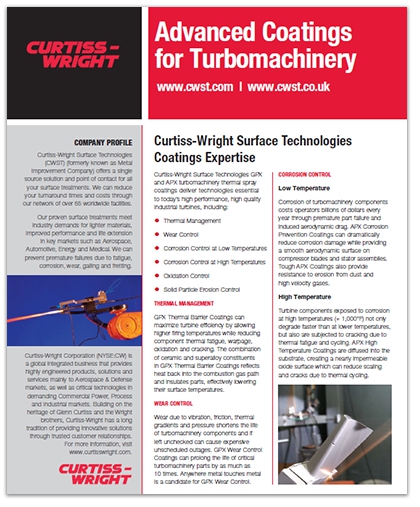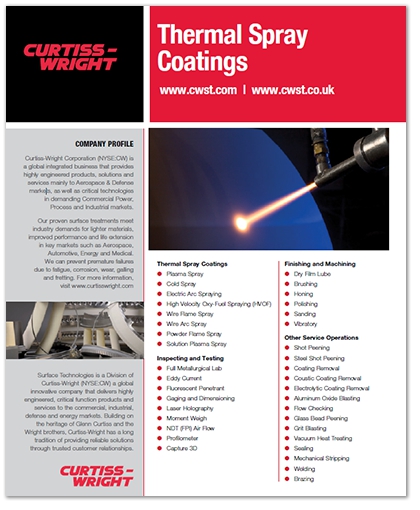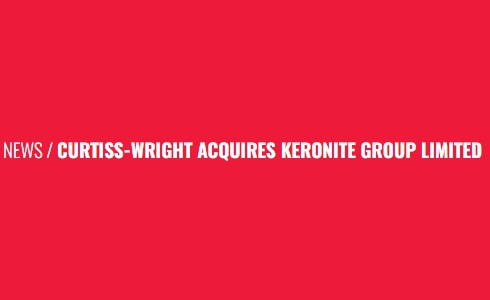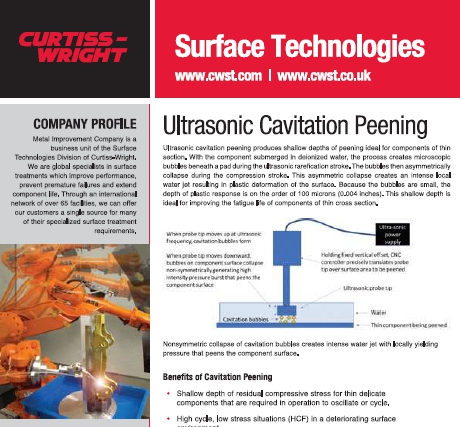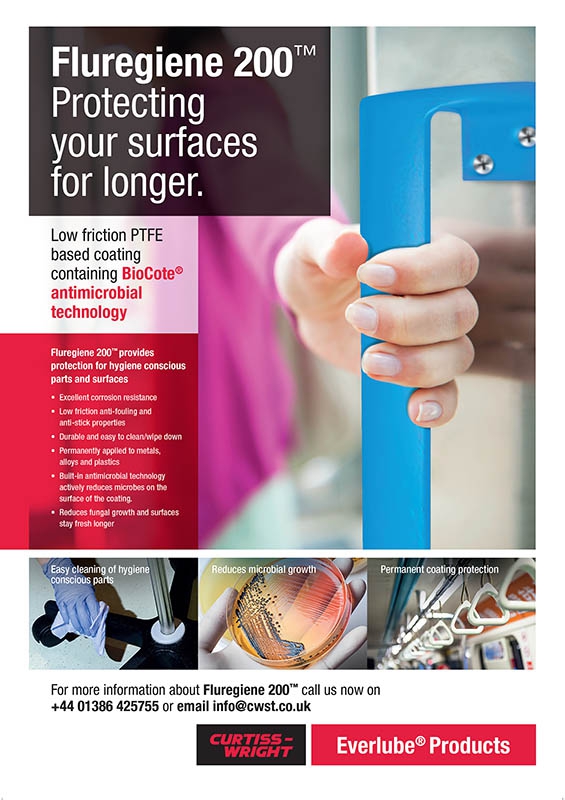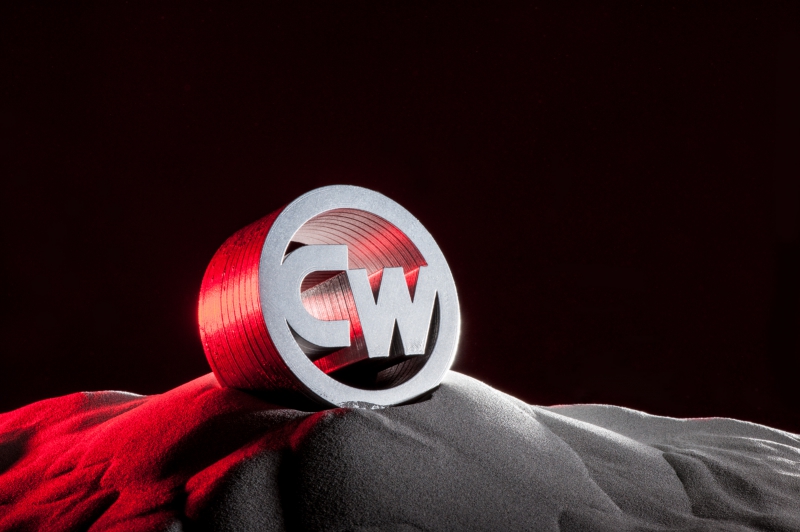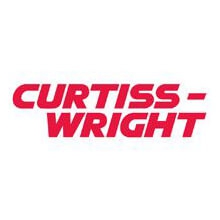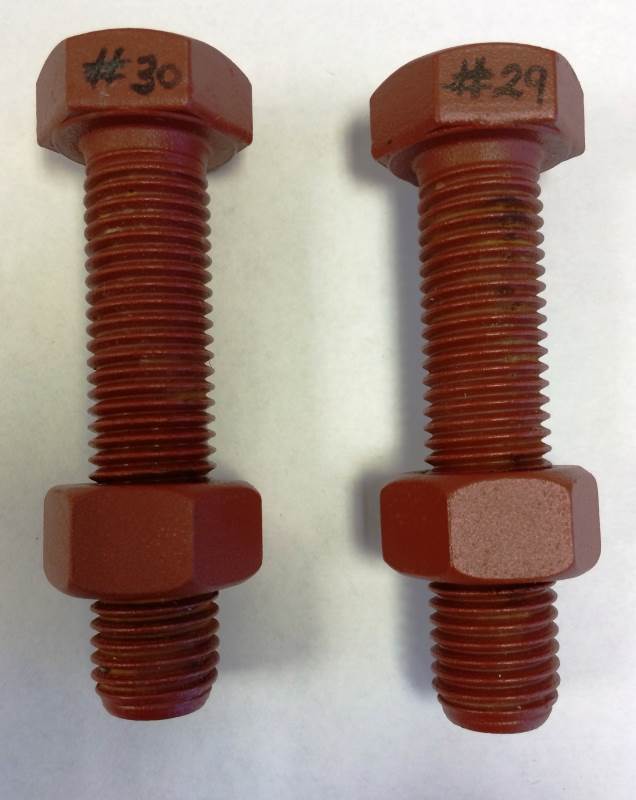- Contact 0870 350 7767
- |
- Advertise
Could your components be improved by Shot Peening?
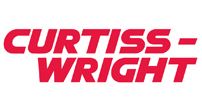 News and PR from Curtiss-Wright Surface Technologies - Published 13 November 2019
Controlled shot peening is a cold work process that is used to change the properties of metals and alloys by developing a layer of compressive stress in the surface of components.
News and PR from Curtiss-Wright Surface Technologies - Published 13 November 2019
Controlled shot peening is a cold work process that is used to change the properties of metals and alloys by developing a layer of compressive stress in the surface of components.The process of controlled shot peening involves the use of spherical media known as shot. As each piece of shot strikes the surface of a material it creates a small indentation where the surface will attempt to yield. Substrate material will restrain the surface under compression during this process- removing tensile stresses.
At CWST, computer controlled robotic machinery is used during controlled shot peening to maximise precision and quality. Each application of controlled shot peening has its own unique requirements such as geometry, manufacturing method, base material, strain sensitivity, in-service environment and loading conditions. Further considerations such as cost and turnaround time will also be considered for each application.
The Shot Peening Process is one of the most economical and effective methods of both increasing surface and subsurface residual compressive stresses and removing residual tensile stresses to increase the components life. Depending on the application of the component, different media may be used. Media range from metal, ceramic and glass and will each will be used for different material finishes and applications.
Common applications of controlled shot peening include; gear parts, camshafts, clutch springs, coil springs, connecting rods, crankshafts, gearwheels, leaf and suspension springs, rock drills and turbine blades.
The shot peening process is also sometimes used in aviation and automotive industries on components like engine blocks and cylinder heads.
Controlled shot peening is a highly cost-effective method of reducing residual tensile stress that may have been induced during manufacturing or the operating conditions of components. Furthermore, controlled shot peening helps to prevent failures due to; metal fatigue, corrosion fatigue, stress corrosion cracking, intergranular corrosion, fretting, falling, spalling and wear.
Curtiss-Wright specialise in surface technologies and offer customer a single source solution and point of contact for all their controlled metal surface treatments, supporting their requirements through a global network of over 70 worldwide and on-site field teams.
Other announcements from Curtiss-Wright Surface Technologies
-
-
RIBBON CUTTING CEREMONY OF NEW SURFACE TECHNOLOGIES FACILITY IN HUNGARY
CURTISS-WRIGHT ANNOUNCES RIBBON CUTTING CEREMONY OF ITS NEW SURFACE TECHNOLOGIES FACILITY IN BEKESCSABA, HUNGARY
06 Sep 2023
-
Curtiss-Wright's Keronite Business Secures Nadcap Approval Certification
Curtiss-Wright Surface Technologies Division today announced that its Keronite business, has successfully secured Nadcap accreditation for Chemical Processing at its Greenwood, IN facility.
20 Jun 2023
-
NEW BROCHURE - Advanced Coatings for Turbomachinery
GPX Thermal Barrier Coatings can maximize turbine efficiency by allowing higher firing temperatures while reducing component thermal fatigue, warpage, oxidation and cracking.
07 Mar 2023
-
NEW BROCHURE - Thermal Spray Coatings
Take a look at our new Thermal Spray Coatings Brochure.
08 Feb 2023
-
CURTISS-WRIGHT ACQUIRES KERONITE GROUP LIMITED
A Leading Global Supplier of Plasma Electrolytic Oxidation Surface Treatment Coatings
30 Nov 2022
-
NEW BROCHURE - Ultrasonic Cavitation Peening & Laser Peening
Take a look at our new brochure that details our Ultrasonic Cavitation Peening & Laser Peening services:
09 Aug 2022
-
Introducing Fluregiene 200™
Curtiss-Wright Surface Technologies, Everlube® Coating Products have partnered with BioCote® to expand their fluoropolymer coating product range to create Fluregiene 200™:
21 Jun 2022
-
Fluregiene 200™ Protecting your surfaces for longer.
Low friction PTFE based coating containing BioCote® antimicrobial technology.
19 Jan 2022
-
Everlube Products & Coating Services
Protection & life extension of your critical components throughout any crisis!
05 Aug 2020
-
NEW Vacuum Furnace Installed
Curtiss -Wright Surface technologies are pleased to announce the addition of in-house Vacuum Brazing, Sintering and Heat treatment within our Component Coating and Repair facility.
07 Jul 2020
-
Additive Manufacture (AM) Post Processing
Additive manufacturing is a rapidly growing industry, the technology has grown from a rapid prototyping solution into mainstream production of high complexity components.
01 Apr 2020
-
Our new service
Here at CWST we now have launched a new service called Additive Manufacture (AM). You can find out more information regarding this service by visiting our website at www.cwst.co.uk.
11 Mar 2020
-
Exhibiting at the Aerospace Wales
We are exhibiting at the Aerospace Wales in Broughton North Wales on Thursday 5th December.
07 Feb 2020
-
Curtiss Wright Impress at the 2018 Advanced Engineering Show
In 2019 saw the 10th anniversary of the Advanced Engineering Show, one of the biggest engineering and industrial based trade shows in the UK.
08 Jan 2019
-
Experts in Life Extension of Materials & Critical Components
Curtiss-Wright have a commendable history behind them, having been founded by three of the world’s most celebrated aviation pioneers, Orville and Wilbur Wright and Mr. Glenn Curtiss...
05 Apr 2018
-
Leaders in surface engineering
Increasing the performance and life of critical components
03 Nov 2016
-
-
Everlube® Products UK Develops New Subsea Fastener Coating
Everlube® 1174 is a new low VOC, low friction, load bearing, thin film, resin bonded, corrosion resistant, thermoset PTFE coating.
18 Aug 2015








